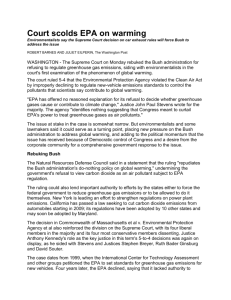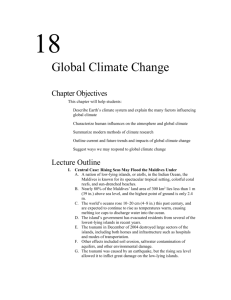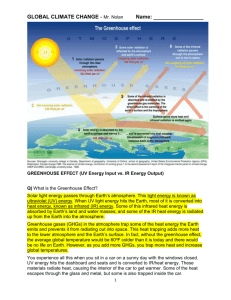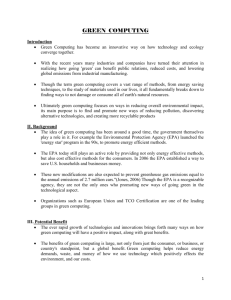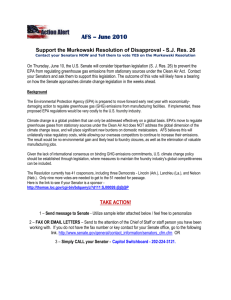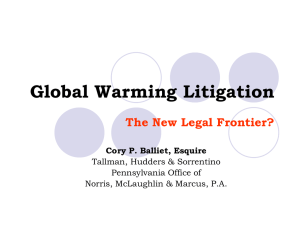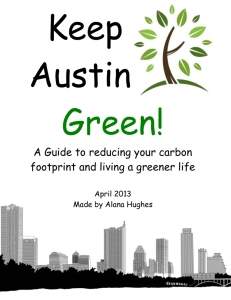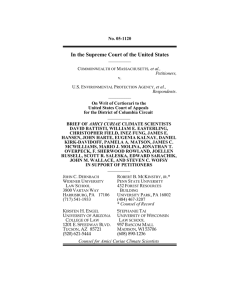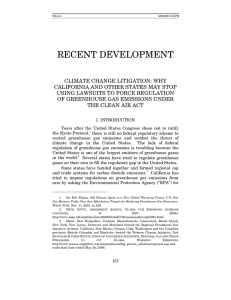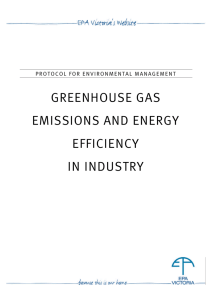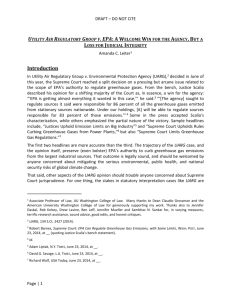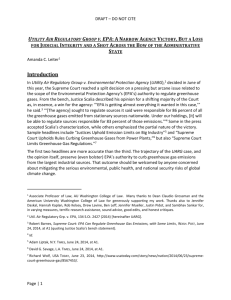MPH500 Environmental Health Analysis
advertisement
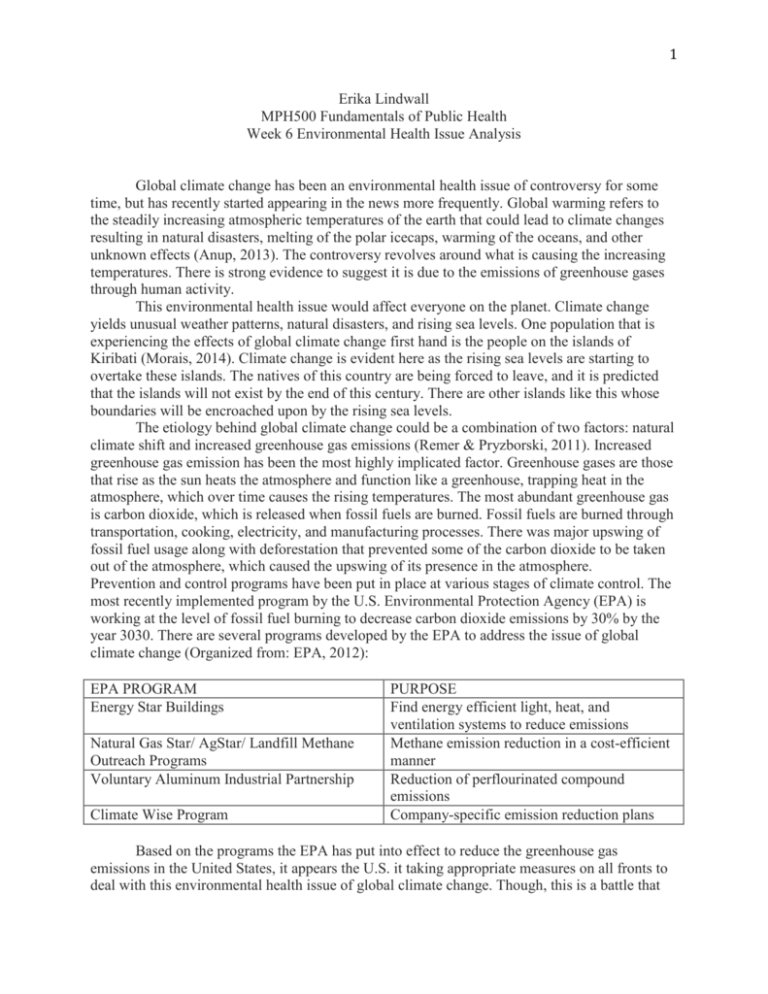
1 Erika Lindwall MPH500 Fundamentals of Public Health Week 6 Environmental Health Issue Analysis Global climate change has been an environmental health issue of controversy for some time, but has recently started appearing in the news more frequently. Global warming refers to the steadily increasing atmospheric temperatures of the earth that could lead to climate changes resulting in natural disasters, melting of the polar icecaps, warming of the oceans, and other unknown effects (Anup, 2013). The controversy revolves around what is causing the increasing temperatures. There is strong evidence to suggest it is due to the emissions of greenhouse gases through human activity. This environmental health issue would affect everyone on the planet. Climate change yields unusual weather patterns, natural disasters, and rising sea levels. One population that is experiencing the effects of global climate change first hand is the people on the islands of Kiribati (Morais, 2014). Climate change is evident here as the rising sea levels are starting to overtake these islands. The natives of this country are being forced to leave, and it is predicted that the islands will not exist by the end of this century. There are other islands like this whose boundaries will be encroached upon by the rising sea levels. The etiology behind global climate change could be a combination of two factors: natural climate shift and increased greenhouse gas emissions (Remer & Pryzborski, 2011). Increased greenhouse gas emission has been the most highly implicated factor. Greenhouse gases are those that rise as the sun heats the atmosphere and function like a greenhouse, trapping heat in the atmosphere, which over time causes the rising temperatures. The most abundant greenhouse gas is carbon dioxide, which is released when fossil fuels are burned. Fossil fuels are burned through transportation, cooking, electricity, and manufacturing processes. There was major upswing of fossil fuel usage along with deforestation that prevented some of the carbon dioxide to be taken out of the atmosphere, which caused the upswing of its presence in the atmosphere. Prevention and control programs have been put in place at various stages of climate control. The most recently implemented program by the U.S. Environmental Protection Agency (EPA) is working at the level of fossil fuel burning to decrease carbon dioxide emissions by 30% by the year 3030. There are several programs developed by the EPA to address the issue of global climate change (Organized from: EPA, 2012): EPA PROGRAM Energy Star Buildings Natural Gas Star/ AgStar/ Landfill Methane Outreach Programs Voluntary Aluminum Industrial Partnership Climate Wise Program PURPOSE Find energy efficient light, heat, and ventilation systems to reduce emissions Methane emission reduction in a cost-efficient manner Reduction of perflourinated compound emissions Company-specific emission reduction plans Based on the programs the EPA has put into effect to reduce the greenhouse gas emissions in the United States, it appears the U.S. it taking appropriate measures on all fronts to deal with this environmental health issue of global climate change. Though, this is a battle that 2 cannot be won by one country alone. It may be beneficial to work with the UN on creating a more global effort to inform people about the potential dangers and how individuals can be involved in the fight to keep the planet safe. Something that requires attention is the deforestation that is reducing the earth’s natural ability to recycle carbon dioxide and other greenhouse gases (Anup, 2013). Getting global deforestation under control would help reduce the risk of further global warming. References: Morais, B. (2014). President Tong and his Disappearing Islands. The New Yorker. Retrieved from: http://www.newyorker.com/online/blogs/elements/2014/06/the-disappearing-islands-ofkiribati.html Remer, L., Pryzborski, P. (2011). The Carbon Cycle: The Human Role. NASA: Earth Observatory. Retrieved from: http://earthobservatory.nasa.gov/Features/CarbonCycle/carbon_cycle2001.pdf Shah, Anup. (2013). Climate Change and Global Warming Introduction. Global Issues. (11). Retrieved from: http://www.globalissues.org/article/233/climate-change-and-global-warmingintroduction U.S. Environmental Protection Agency. (2012). Global Warming and Climate Change. Retrieved from: http://www.epa.gov/airtrends/aqtrnd95/globwarm.html







